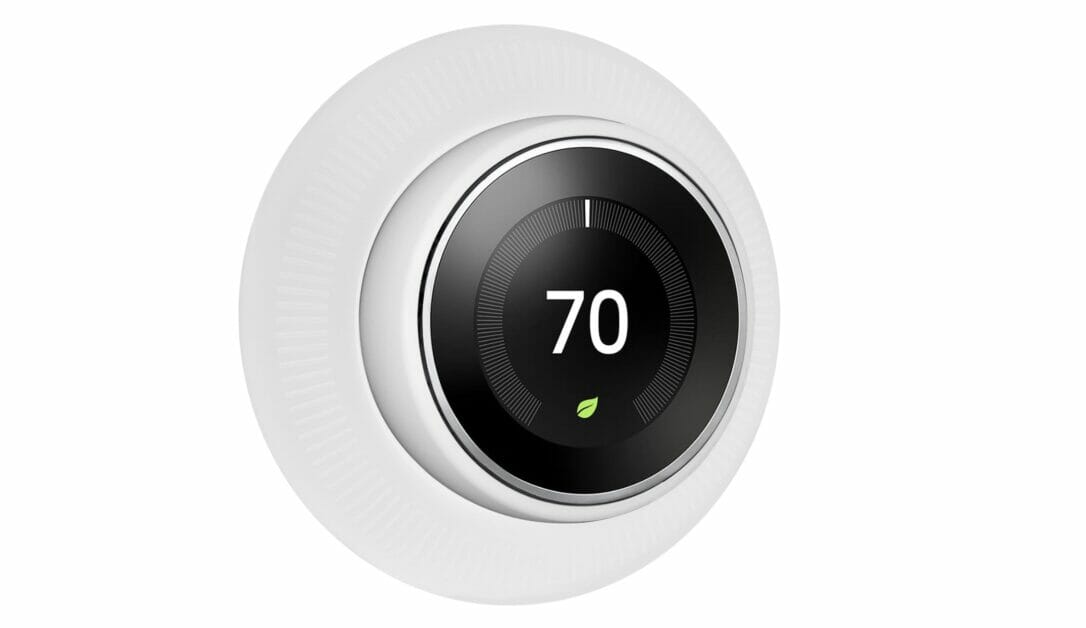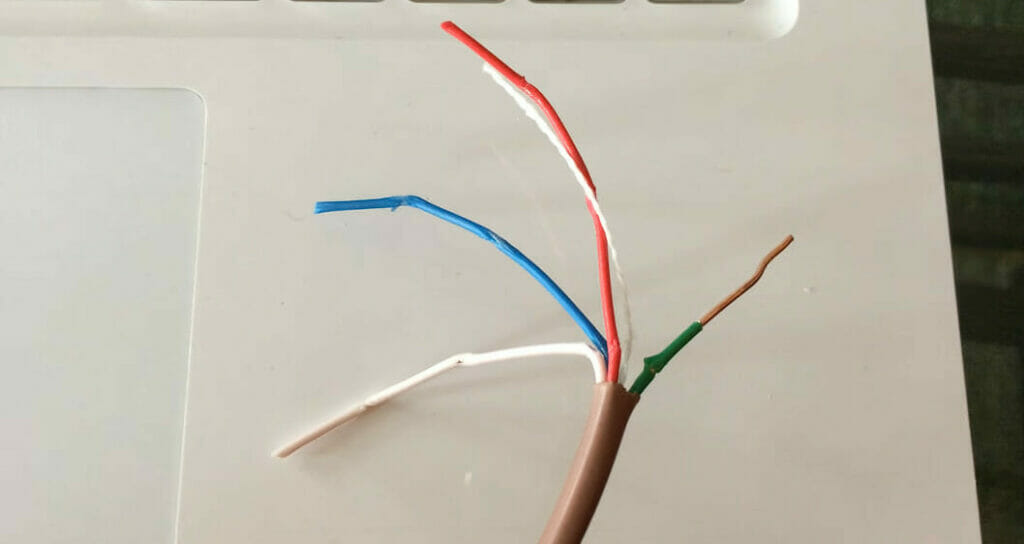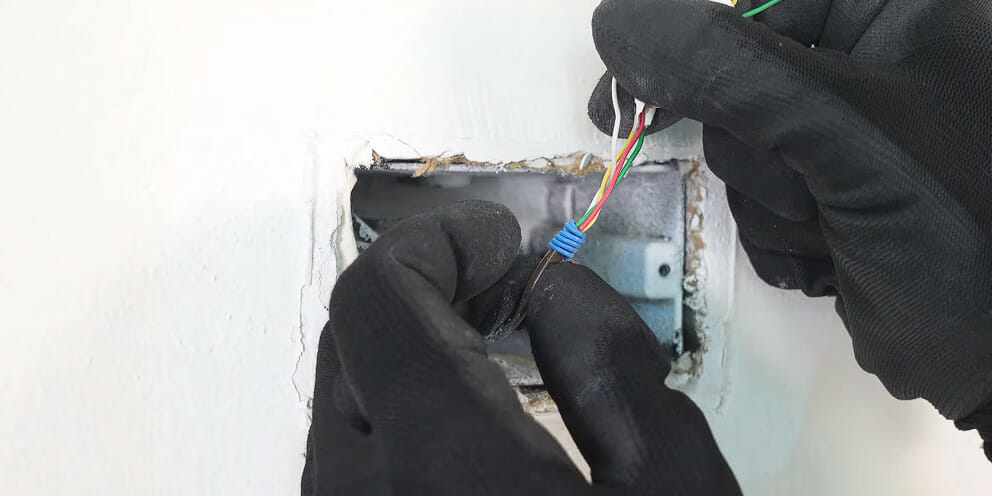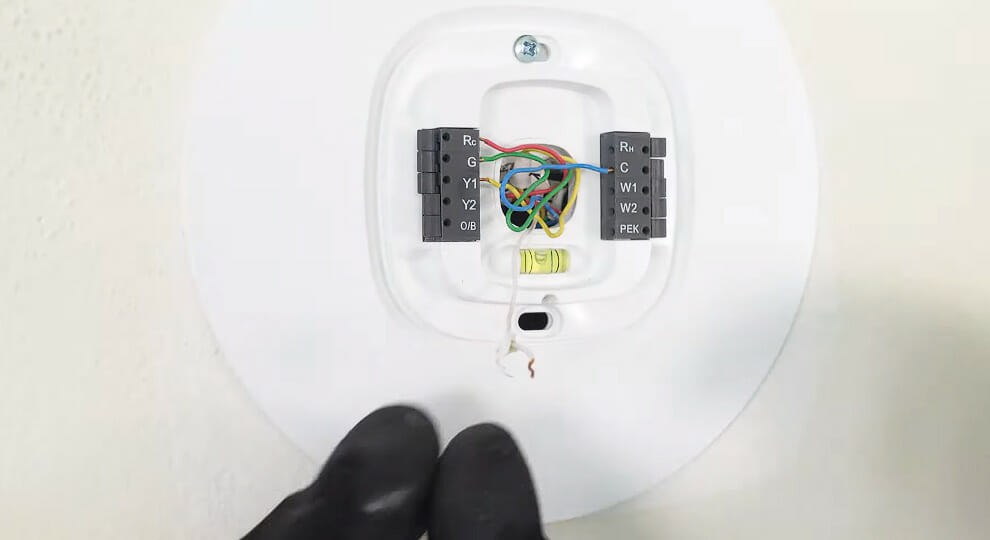Where Does the Blue Wire Go on a Thermostat? (Wiring, HVAC Guide)

If you’ve ever found yourself staring at a bunch of wires while installing a thermostat, thinking Where on earth does this blue wire go? You’re not alone! Thermostat wiring can feel like an unsolvable puzzle. But don’t worry; I’m here to help!
The short answer is – The blue wire on a thermostat usually connects to the C terminal on the thermostat. However, there is an exception. Some manufacturers use a B terminal to control a heat pump; the blue wire might connect there.
In this article, we’ll dive deeper into understanding thermostat wiring, particularly focusing on where exactly that pesky little blue wire goes. So grab your toolbox, and let’s get cracking!
The Role and Connection of the Blue Wire in a Thermostat

Let’s dive straight into the world of thermostats, shall we? We’ve all been there – staring at that nest of wires and wondering where on earth each one goes. Today, I’d like to shine a light on our friend, the blue wire.
The blue wire in a thermostat, also known as the C or “common” wire, is crucial in providing constant power to the thermostat.
This is especially important for smart thermostats that require a continuous power supply for their advanced features.
The blue wire usually connects to the C terminal on the thermostat. It acts as a return path for the electricity supplied by the red wire from the transformer, thus forming a complete circuit.
Sometimes, the blue wire might be used for second-stage cooling systems in 7-wire and 8-wire thermostats.
However, this is less common, and the specific wiring can vary depending on the HVAC system and thermostat configuration.
Types of Thermostat Wiring Systems
| Thermostat Wiring System | Typical Use | Role of the Blue Wire |
|---|---|---|
| 2-Wire System | Heating-only systems (like a gas furnace) or cooling-only systems (like an air conditioner). | Not typically used as these systems often don’t require constant power. |
| 3-Wire System | Heating and cooling systems without fan control. | It can be used as the C wire to provide constant power, especially if a smart thermostat is installed. |
| 4-Wire System | Heating and cooling systems with fan control. | Commonly used as the C wire for providing constant power to the thermostat. |
| 5-Wire System | Heating and cooling systems with fan control and a single stage of either heating or cooling. | Typically used as the C wire. Essential for smart thermostats that require continuous power. |
| 6-Wire System | Multi-stage heating and cooling systems or systems with accessories like a humidifier or dehumidifier. | Generally serves as the C wire, providing constant power. Also might be used for additional features depending on the system. |
| 7 or 8-Wire System | Advanced HVAC systems with multiple heating and cooling stages or systems with multiple accessories. | As with other systems, it often serves as the C wire. However, it may also be used for secondary cooling or additional functions depending on system specifications. |
Please note that the roles of each wire can vary depending on the specifics of the HVAC system and the thermostat. Always refer to the manufacturer’s wiring diagram for the most accurate information.
Connecting the Blue Wire: Step-by-Step Guide
Now onto the real deal – how do you connect the blue wire?
Step 1. Shut Off the Power
The first step in any thermostat installation is to shut off the power to the system. This can be done by turning off the breaker. This step is crucial to avoid blowing fuses or getting an electrical shock.
Step 2. Identify the Blue Wire

The blue wire, or the C or “common” wire, is typically used as a return path for the electricity supplied by the red wire from the transformer.
Step 3. Connect the Blue Wire to the C Terminal

Connect the blue wire to the C terminal on the thermostat. Ensure it’s also connected to the C terminal at the HVAC control panel.
Step 4. Check for Additional Wires
If you have a Rheem or Rudd thermostat and a heat pump system, you may see a black wire and a blue one in the wire set.
If so, the black one is probably the C-wire, but you should check the wiring diagram on the system control board to confirm.
Please note that if your old thermostat didn’t need a blue wire and you want to hook up a new programmable thermostat with a C terminal, you’ll have to install a blue wire.
Most homeowners will elect to hire an HVAC technician for this, but if you want to DIY it, you can either run that wire separately from the system control panel to the thermostat or (preferably) run a new cable that includes all the wires you need.
Use 16- or 18-gauge wire as specified by the manufacturer of your heating/cooling system.
If you’re uncomfortable or familiar with electrical wiring, hiring a professional is always best to avoid potential damage or safety risks.
There you go – everything you need to connect that pesky blue (or should I say ‘common‘) wire!
Professional Assistance: When to Call an HVAC Technician
Now, let’s talk about when it might be time to call in the experts. I’m all for DIY and learning new things, but sometimes you must admit when it’s time to throw in the towel, am I right?
First, if your thermostat doesn’t turn on or respond after you’ve wired everything up, it might be a sign that something’s not quite right. Maybe you missed something.
Or maybe the blue wire isn’t where it should be. In that case, don’t hesitate to contact a professional HVAC technician.
Secondly, if your system starts behaving erratically after messing with the wiring – like your AC kicking on in the middle of winter – that’s another sign you could use expert help. It can happen!
And trust me, troubleshooting can quickly become a wild goose chase without proper knowledge.
Here are a few more reasons why calling an HVAC tech could save you from potential headaches:
- Complex Wiring: Not all thermostats have simple wiring setups. Some systems require additional wires for features like multi-stage heating or cooling.
- Older Systems: If your HVAC system is older than dirt (or feels like it), its wiring may not match modern color-coding standards.
- Safety Concerns: Let’s face it; we’re dealing with electricity here, folks!
Remember, peeps: there’s no shame in asking for help! Even us handyman types need a hand now and then.
Our friendly neighborhood HVAC technicians are trained professionals who deal with this stuff day in and day out.
So go ahead and dial up that pro if things get too tricky – because sometimes knowing when to call an expert is just as valuable as being able to do it yourself!
References
Organizations:
- Air Conditioning Contractors of America (ACCA). https://www.acca.org/
Books:
- “Wiring a House: 5th Edition (For Pros By Pros)” by Rex Cauldwell.
- “Black & Decker The Complete Guide to Wiring, Updated 7th Edition” by Cool Springs Press.
- “Thermostat Wiring for Dummies” by Billy C. Langley.
Websites:
- Nest Thermostat. https://www.amazon.com/Nest-Thermostat-Compatible-Learning-Generation/dp/B0BPSGMB7Y/
- HVACtalk. https://hvac-talk.com/vbb/
Video References:
DIY with Michael Borders
Deanin’ It Yourself
